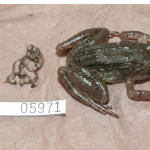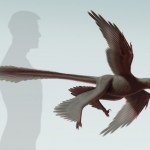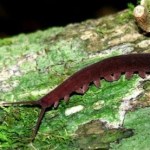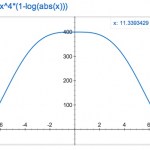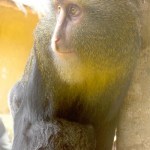new
You may be wondering why I have been so sentimental even though the year is not over yet. I am happy to inform you that it is not because I am retiring. On the contrary, I am packing up my virtual bags and moving this blog to a new site! Pardon the dust while we get settled into our new digs.
Check out the tiny new species of frogs discovered in the cloud forests of Brazil.
Brachycephalus mariaeterezae
Brachycephalus fuscolineatus
Brachycephalus verrucosus
Brachycephalus leopardus
Brachycephalus boticario
Brachycephalus olivaceus
Images from LiveScience.
Male (left) and female L. Larvaepartus frogs discovered in Sulawesi, Indonesia. Image from Figure 2 of PLOS ONE article.
A new species of frog (Limnonectes larvaepartus) has been discovered in the rain forest of Sulawesi island in Indonesia. This species challenges the grade-school wisdom that taught us: 'frogs lay eggs'. It looks like textbooks will need to be revised as this is the only known exception to that rule. Study author Dr. Jimmy McGuire (University of California, Berkeley) said the following as quoted in Reuters, "Reproduction in most frogs could not be more…
This newly discovered feathered dinosaur, Changyuraptor yangi, was built like a modern airplane. Illustration by S. ABRAMOWICZ, DINOSAUR INSTITUTE, NHM.
Photo of fossil by: Luis Chiappe Dinosaur Institute, NHM as published in the USA Today
The discovery of this non-avian dinosaur, Changyuraptor yangi, that lived 125 million years ago suggests that flight came before birds. The fossil was discovered in the Liaoning Province of northeastern China by Luis Chiappe from the Natural History Museum in Los Angeles, CA. At nearly 4 feet long, it is the largest so-…
Image of velvet worm from: Oliveira et al / Zoologischer Anzeiger
A new species of velvet worm (Eoperipatus totoros) is the first to be described from Vietnam after its discovery in 2010. This 2.5 inch long worm is distinguished from other velvet worms by hairs with unique shapes that cover its body. These animals are difficult to find and study because they are usually hiding in the moist soil to prevent dehydration. However, during the rainy season, they exit the soil and can be spotted. What is neat about these worms is that they hunt by spraying a glue-like…
Meet the first newly discovered mammalian species in 35 years, the olinguito, as presented by Rob Nelson from Untamed Science:
"Despite its name, the big bang theory is not really a theory of a bang at all. It is really only a theory of the aftermath of a bang." -Alan Guth
So you finally understand it. The Big Bang tells us that the Universe was hotter, denser, and expanding at a faster rate in the past.
Image credit: original source unknown.
The farther back we go, the closer together everything was, the higher in temperature (and shorter in wavelength) all the radiation was, and -- of course -- the younger the Universe was.
Image credit: Ned Wright (possibly Will Kinney, too), via http://ned.ipac.…
Adult male lesula monkey discovered in the Democratic Republic of Congo. Image: M. Emetshu. PLOS One, doi:10.1371/journal.pone.0044271.g007.
Dr. John Hart, Scientific Director of the Lukuru Wildlife Research Foundation in Kinshasa, discovered the colorful lesula monkey while sifting through photos brought back from a 2007 field expedition to the Democratic Republic of Congo. Shown in the photo was a little girl named Georgette feeding one. The monkeys have blond manes and upper chests with a bright red patch on their lower backs. After extensive…
Newish super trendy band out of Iceland.
Jazzy math music with touch of heavy rock.
Or so I was told.
Album is "Lightbulb Universe"
Eyes of a Cloud Catcher at the Weird Girls Project
Above These City Lights
live - yup, they also rock
You can fan them on facebook
A fascinating article in Livescience reveals the answer to a century-old zoological mystery: what do y-larvae grow up to become? Discovered in 1899, y-larvae are clearly young crustaceans but their adult stage could not be determined. While this in itself was perplexing, the newly discovered answer is even more startling: y-larvae metamorphosize into "simple, pulsing, slug-like masses of cells... far simpler than their larval stage." In a sense, the creatures revert backwards to forms more commonly seen further down the evolutionary ladder as they mature.
Watch the process
This awesome video…
Sure, astronomers might not call it a planet anymore, but every schoolchild knows how badass Pluto really is. It's got a giant moon, Charon, and two smaller ones, Hydra and Nix.
In addition to being colder than ice with an average temperature of 44 Kelvin (that's colder than liquid nitrogen), I'm here to bring you the news that despite the fact that it's so cold and so far from the Sun, Pluto has been melting!
Since its discovery by Clyde Tombaugh in 1930, astronomers have been fascinated with Pluto, making very careful observations of it, trying to learn more about this bizarre, icy sphere…

